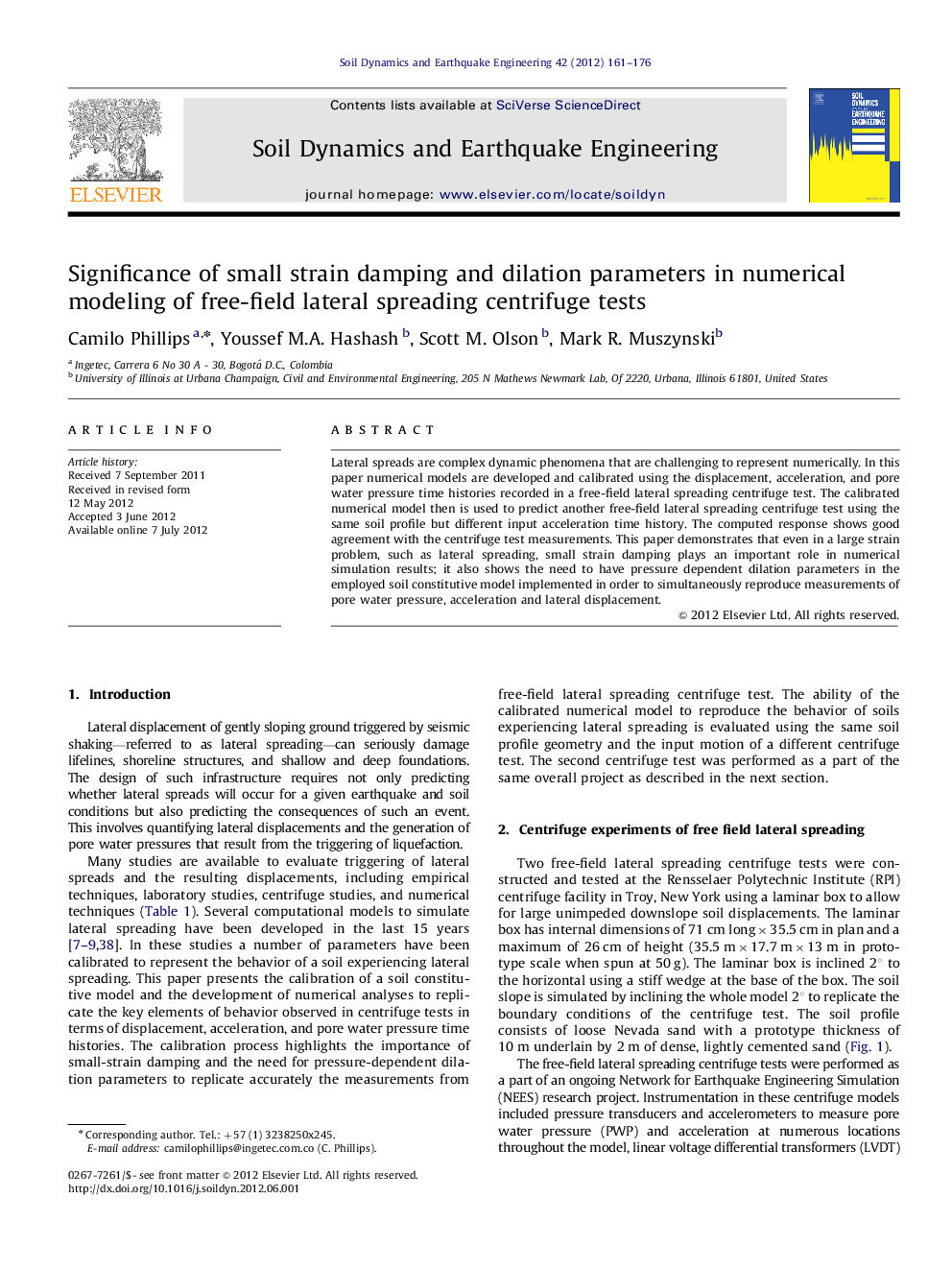| Article ID | Journal | Published Year | Pages | File Type |
|---|---|---|---|---|
| 304485 | Soil Dynamics and Earthquake Engineering | 2012 | 16 Pages |
Lateral spreads are complex dynamic phenomena that are challenging to represent numerically. In this paper numerical models are developed and calibrated using the displacement, acceleration, and pore water pressure time histories recorded in a free-field lateral spreading centrifuge test. The calibrated numerical model then is used to predict another free-field lateral spreading centrifuge test using the same soil profile but different input acceleration time history. The computed response shows good agreement with the centrifuge test measurements. This paper demonstrates that even in a large strain problem, such as lateral spreading, small strain damping plays an important role in numerical simulation results; it also shows the need to have pressure dependent dilation parameters in the employed soil constitutive model implemented in order to simultaneously reproduce measurements of pore water pressure, acceleration and lateral displacement.
► 3D numerical models developed and calibrated using centrifuge measurements. ► Important role of small strain damping in the response. ► Overburden pressure-dependent dilation parameters required. ► Model capable to reproduce different measurements simultaneously of 2 centrifuge tests.
